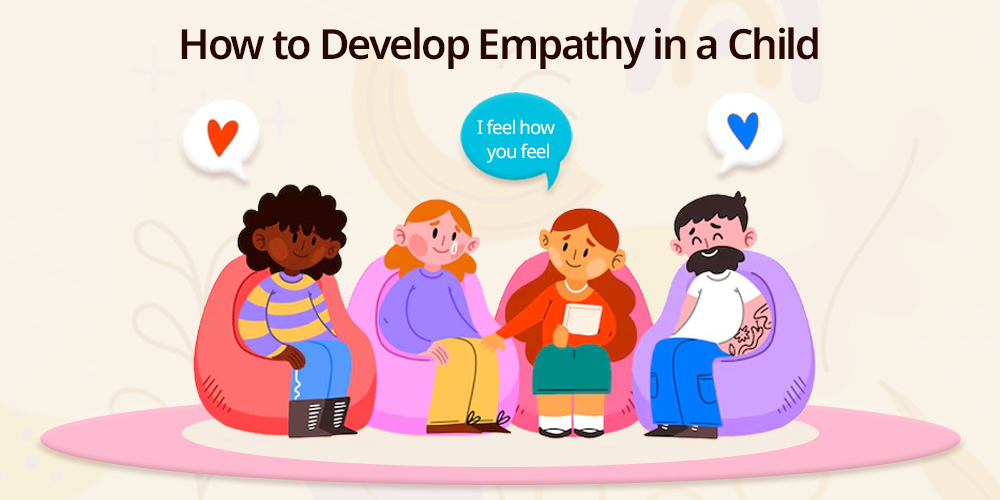
Empathy is one of the greatest assets to human kind and it is a very important trade in a child which will help in shaping him into a compassionate and understanding individual.
For the world which is competitive it is very important to teach children how to understand and share their feelings to others.
Empathy does not only enhance social skills but also help children in building meaningful relationships for their future which will further help them in navigating through emotional situations.
Empathy is something that a child naturally develops and displays empathy but in certain cases they may need guidance and nurturing to develop the skills to contribute positively towards the society.
Contents
What is Empathy?
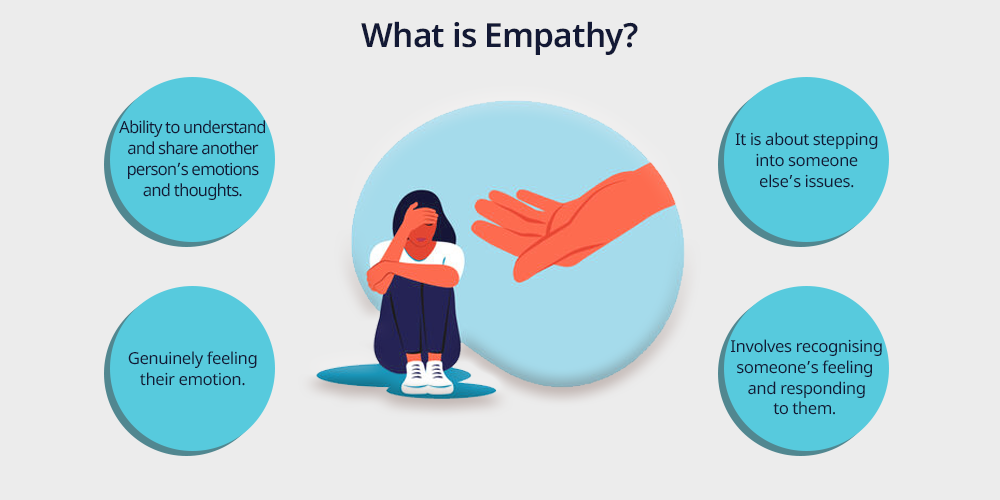
Empathy is a skill or ability to understand and share another person’s emotions and thoughts in experience in a way that you communicate well.
It involves recognising someone’s feelings and responding to them with care and understanding in a particular situation.
Empathy goes way beyond sympathy is nearly feeling sorry for someone but empathy is about stepping into someone else’s issues and genuinely feeling their emotion.
For children empathy can be manifested as the very simple step of noticing a friend’s sadness and offering comfort to them or even understanding a sibling’s frustration to help them calm down.
The small acts of emotional awareness can create a foundation for a healthy relationship in them and teach them about emotional intelligence. We can also say that teaching empathy is a part of Social-Emotional Learning (SEL).
Why is Empathy Important for Children?
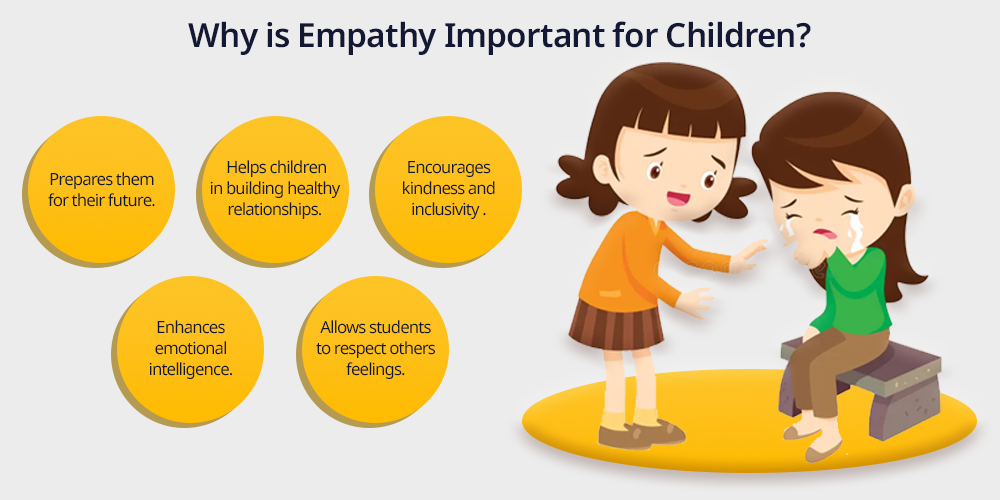
Empathy is very important to children and that too from a very young age as it plays a very important role in preparing them for their future to be more active in any social environment and it also contributes to their emotional development and socio-economic skill altogether.
Empathy helps children in building healthy relationships for themselves that are more stable and meaningful as they are more equipped with confidence and other skills needed to build strong, positive relationships with peers and adults.
Empathy enhances emotional intelligence in students, as it is believed that when you put yourself in someone else’s place to feel their situation it helps you understand their emotions and also helps them in understanding their own emotions well which leads to better communication and conflict resolutions — it’s more about being conscious about the environment and knowing the people around them better.
And this, we can say that empathy allows students to respect others feelings and value their opinion which can significantly reduce aggressive behaviours in students like bullying and teasing, making them more approachable and considerate.
Empathy encourages kindness and inclusivity for students as it empires them with compassion which makes children more likely to help others and impress diversity in themselves.
Empathy Prepares Them for Life as it helps in building Emotional awareness and also helping them in understanding are essential skills for personal and professional success in adulthood.
Strategies to Develop Empathy in a Child
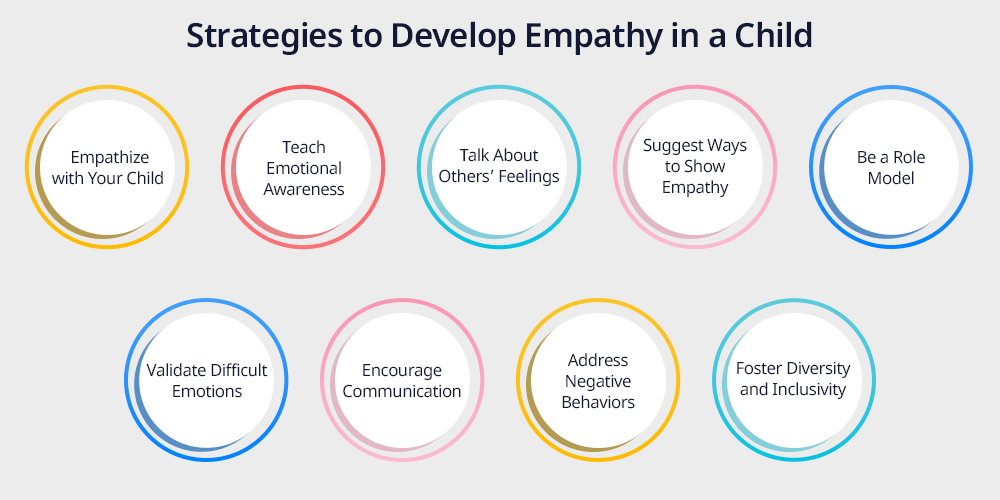
1. Empathize with Your Child
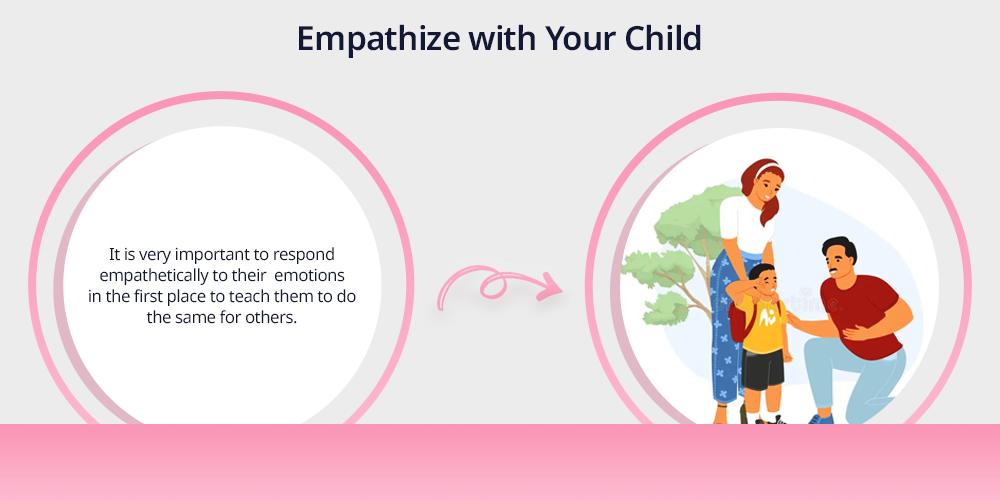
The best way to teach students empathy is to show them about it.
It is believed that students learn what they see and then parents and Caregivers show empathy with children they learn to reciprocate this behaviour.
As students acknowledge their emotions and listen actively they validate their feelings for example instead of dismissing a child’s fear of the dark : parents can try saying “I understand that you are scared and let’s find a way to make you feel safe in this environment”.
It is very important to respond empathetically to their emotions in the first place to teach them to do the same for others.
2. Teach Emotional Awareness
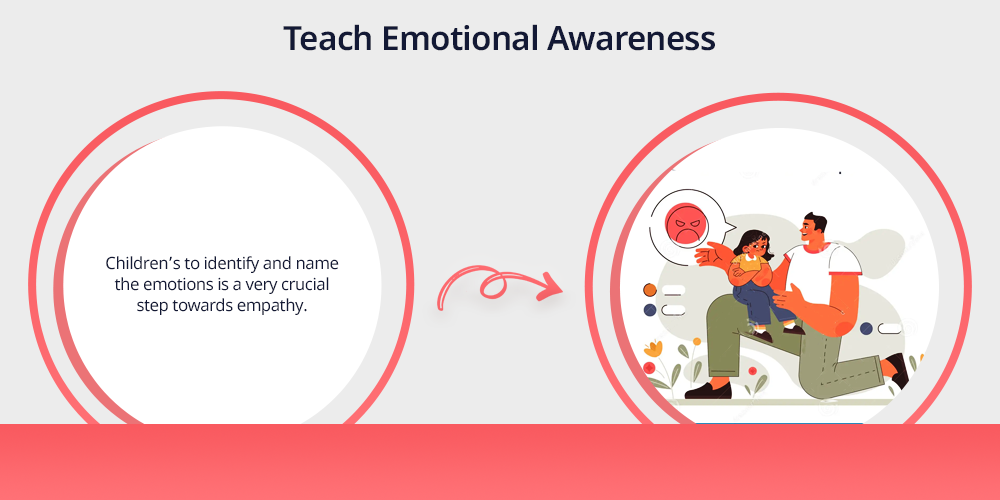
Children’s to identify and name the emotions is a very crucial step towards empathy as it will teach them about emotional awareness.
Suggested for parents to use language that connects emotions to situations.
Consider an example : “It looks like you’re feeling frustrated because the puzzle isn’t coming together. Let’s try doing it again.“
In order to identify emotions well, books, stories and role playing will help students in connecting with those emotions and teach them emotions in a fun and engaging way.
So, How Do Children Socialise With Each Other, they socialise by talking, interacting and sharing their feelings.
3. Talk About Others’ Feelings
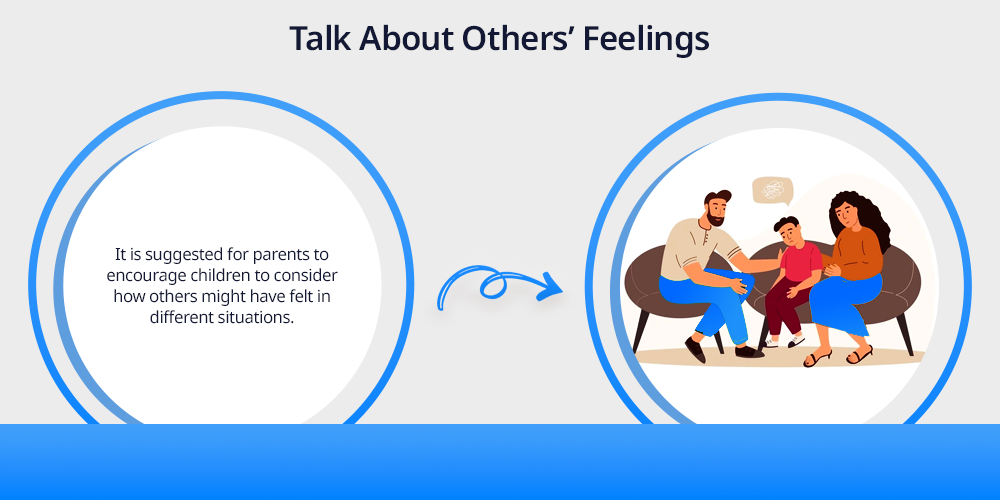
It is suggested for parents to encourage children to consider how others might have felt in different situations.
When parents talk about others’ feelings using real life examples or putting out characters from books and movies to ask questions, children tend to connect with it in a better way.
For example it is beneficial to use questions like : “how do you think the character felt when they lost their favourite toy?“
When parent and child discuss emotions from various perspectives, It helps them understand and relate to the situation and emotion well and also allows them to connect with others.
4. Suggest Ways to Show Empathy
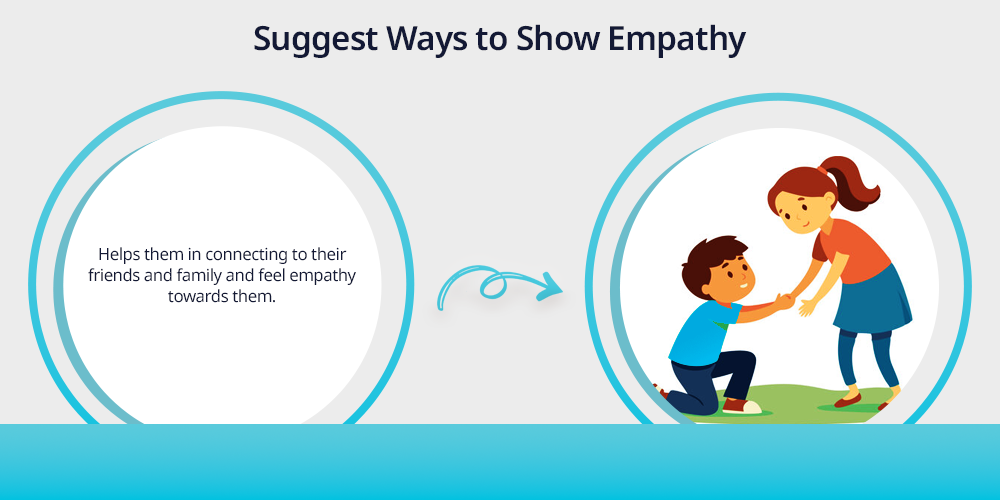
Parents can suggest ways to show empathy to children which will help them in guiding them and practicing empathy through actions.
Like offering a hug and sharing a toy can help students and can make a big difference in their life which will help them in connecting to their friends and family and feel empathy towards them.
Parents can suggest age appropriate ways for children to show kindness and care such as writing thank you notes or helping siblings in their work.
5. Be a Role Model
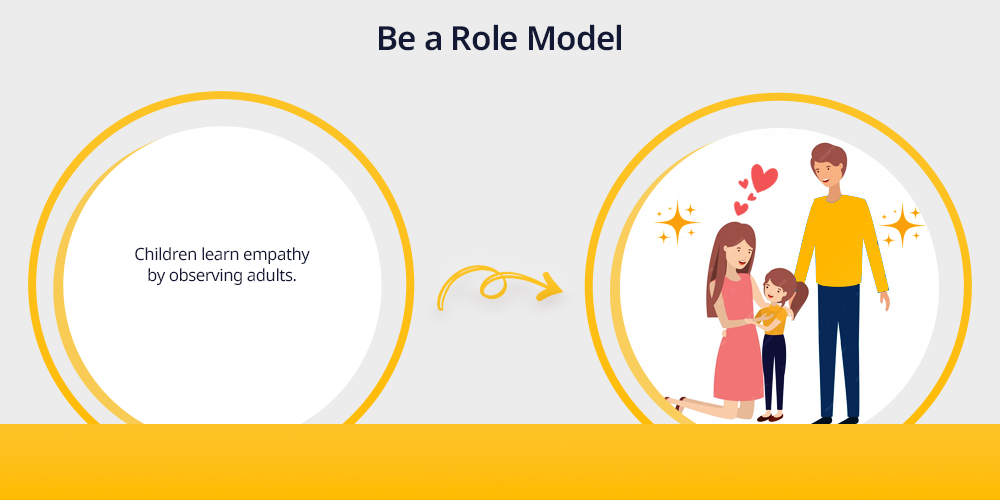
Children learn empathy by observing adults and when parents interact with others in a certain way children tend to pick their behaviours as per their parents pattern of behaviour.
Showing kindness and understanding that in your daily life interaction whether it is helping a neighbour or being patient with the cashier or comforting of friends can create a huge impact on children as they observe these small activities and try to incorporate it in their life in a very similar manner.
It is often believed and people say that let your child see you empathising with others and explain to them why it is important on a regular basis to make them feel the same way.
6. Validate Difficult Emotions
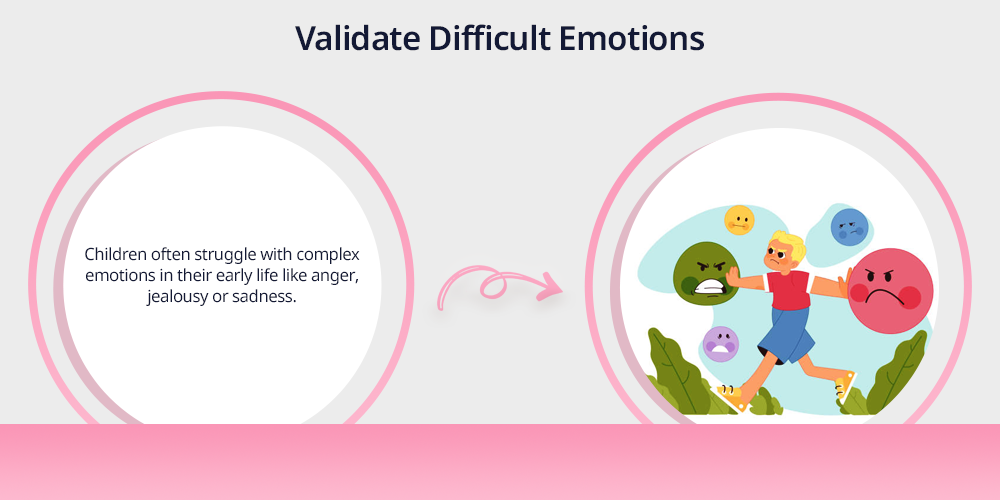
Children often struggle with complex emotions in their early life like anger, jealousy or sadness and it is very difficult for them to process it in the first place.
So it is suggested for parents that instead of dismissing or punishing these feelings for them, validate them and guide them how to express those feelings more constructively.
For example in case a child is sad about not winning a game parents can try putting out a statement like:
“I understand that you are not okay with the fact that you didn’t win the game, it’s upsetting and it’s okay to feel that way. Let’s talk about it.”
By acknowledging their emotions parents can teach students how to respect and validate others feelings too in such situations.
7. Encourage Communication
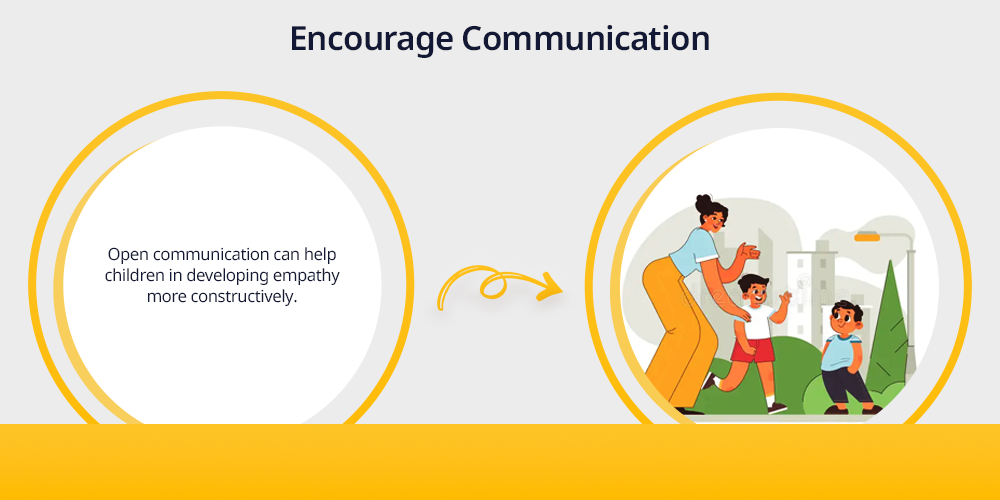
Open communication can help children in developing empathy more constructively.
It is suggested for parents to encourage their children to talk about their feelings and listen to them without any judgement which will create a very safe environment for them to express their feelings and ask questions about emotions which will help them in becoming a well rounded individual.
Empathy is an essential part of personality development so one can prefer looking at this blog that deals with personality development and gives tips about it : Tips For Students For Personality Development.
8. Address Negative Behaviors
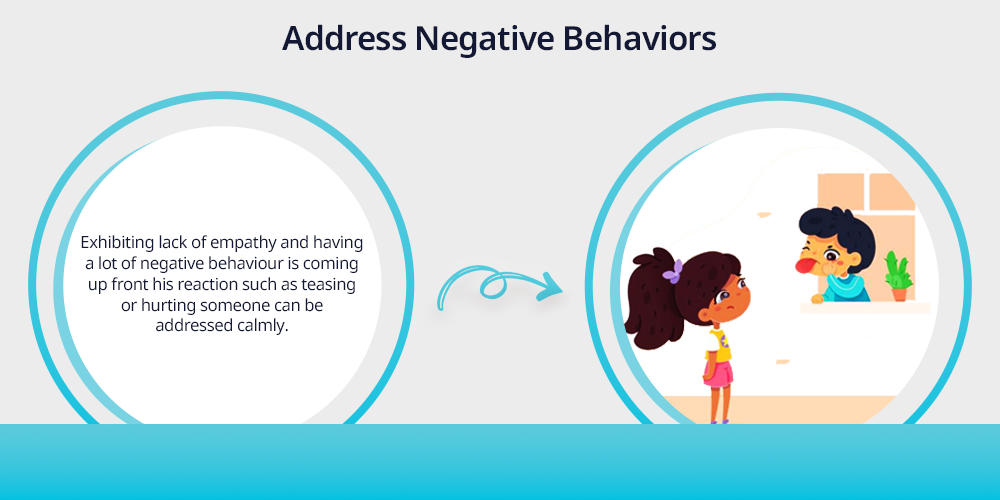
Exhibiting lack of empathy and having a lot of negative behaviour is coming up front his reaction such as teasing or hurting someone can be addressed calmly and constructively.
Explain the impact of their behaviour and action towards others and encourage them to apologize first.
For example in a situation where your child and his/her friend have been in a fight.
Try putting out statements like: “when you say that thing to your friend, it hurts their feelings. How do you think they felt and what can you do to make things right for them now?“
9. Foster Diversity and Inclusivity
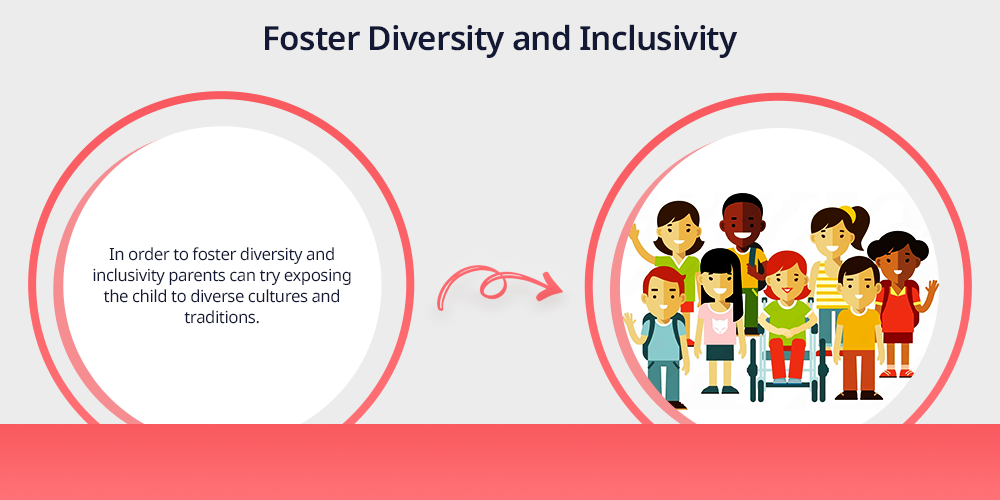
Inorder to foster diversity and inclusivity parents can try exposing the child to diverse cultures and traditions and try discussing it with people around which will help students in understanding different perspectives and will motivate them to learn better and understand every aspects deeply.
This inclusivity and diversity encourages students to interact with people and build connections regardless of their belongingness.
Interacting with people from different backgrounds and people who follow different cultures and traditions paves way for discussion and provides additional value to inclusivity, which allows students to understand and promote inclusivity in their daily life.
Inclusivity is an additional element of alternative education, which is believed to be an educational program that isn’t available to students studying in a traditional school program.
Activities like volunteering, participating in community events and celebrating festivals from different cultures can help students in broadening their point of view and will allow them to look at the world with a better vision and perspectives ultimately fostering empathy in them .
Conclusion
Empathy is powerful, and to empower children it is important to lay a foundation for a child’s emotional and social well-being.
It is suggested for parents to teach and practice empathy themselves and guiding their children in their learning journey and create a channel for them through emotional awareness, communication, and inclusivity in parents and caregivers can nurture this invaluable trait.
For childrens it is very strategic to make them learn to understand and share the feeling of others, it is not only to grow into compassionate individuals and also helps them in creating a kinder and interconnected world.
It helps in children by fostering empathy in their child and empowering them to thrive in their relationships and navigate their life with understanding and care.Here’s a list of Top 5 confidence building skills to help shy teens and how they can help themselves with a better and interactive personality.



